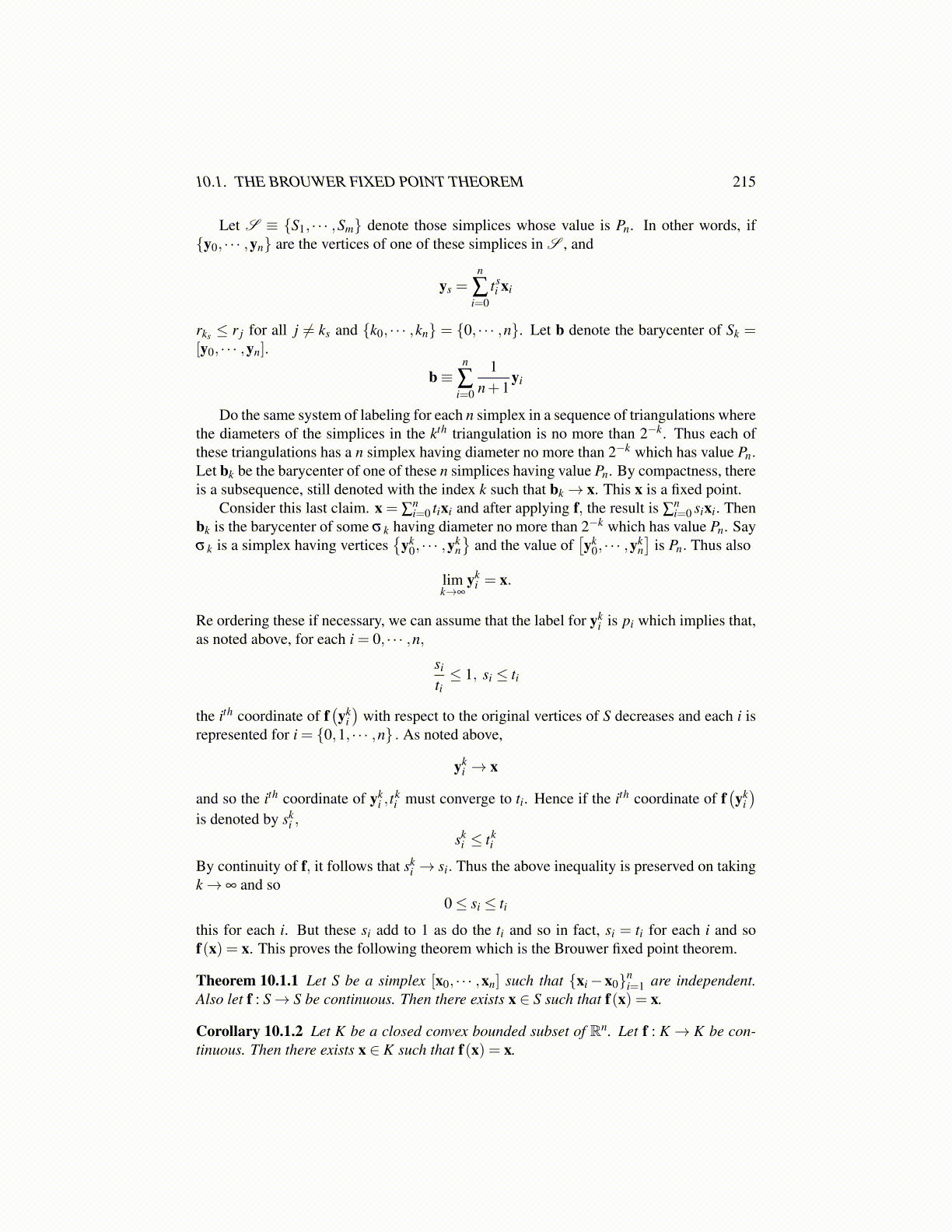
10.1. THE BROUWER FIXED POINT THEOREM 215
Let S ≡ {S1, · · · ,Sm} denote those simplices whose value is Pn. In other words, if{y0, · · · ,yn} are the vertices of one of these simplices in S , and
ys =n
∑i=0
tsi xi
rks ≤ r j for all j ̸= ks and {k0, · · · ,kn} = {0, · · · ,n}. Let b denote the barycenter of Sk =[y0, · · · ,yn].
b≡n
∑i=0
1n+1
yi
Do the same system of labeling for each n simplex in a sequence of triangulations wherethe diameters of the simplices in the kth triangulation is no more than 2−k. Thus each ofthese triangulations has a n simplex having diameter no more than 2−k which has value Pn.Let bk be the barycenter of one of these n simplices having value Pn. By compactness, thereis a subsequence, still denoted with the index k such that bk→ x. This x is a fixed point.
Consider this last claim. x = ∑ni=0 tixi and after applying f, the result is ∑
ni=0 sixi. Then
bk is the barycenter of some σ k having diameter no more than 2−k which has value Pn. Sayσ k is a simplex having vertices
{yk
0, · · · ,ykn}
and the value of[yk
0, · · · ,ykn]
is Pn. Thus also
limk→∞
yki = x.
Re ordering these if necessary, we can assume that the label for yki is pi which implies that,
as noted above, for each i = 0, · · · ,n,si
ti≤ 1, si ≤ ti
the ith coordinate of f(yk
i)
with respect to the original vertices of S decreases and each i isrepresented for i = {0,1, · · · ,n} . As noted above,
yki → x
and so the ith coordinate of yki , t
ki must converge to ti. Hence if the ith coordinate of f
(yk
i)
is denoted by ski ,
ski ≤ tk
i
By continuity of f, it follows that ski → si. Thus the above inequality is preserved on taking
k→ ∞ and so0≤ si ≤ ti
this for each i. But these si add to 1 as do the ti and so in fact, si = ti for each i and sof(x) = x. This proves the following theorem which is the Brouwer fixed point theorem.
Theorem 10.1.1 Let S be a simplex [x0, · · · ,xn] such that {xi−x0}ni=1 are independent.
Also let f : S→ S be continuous. Then there exists x ∈ S such that f(x) = x.
Corollary 10.1.2 Let K be a closed convex bounded subset of Rn. Let f : K→ K be con-tinuous. Then there exists x ∈ K such that f(x) = x.